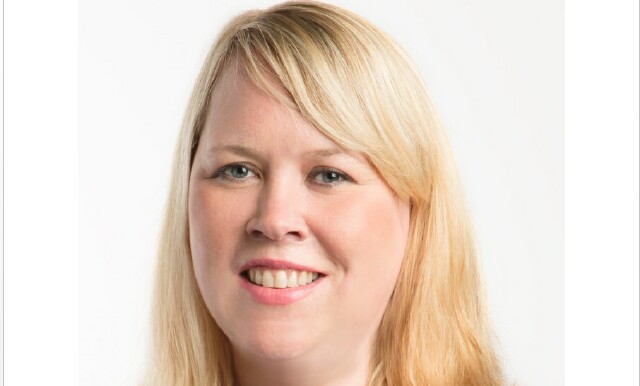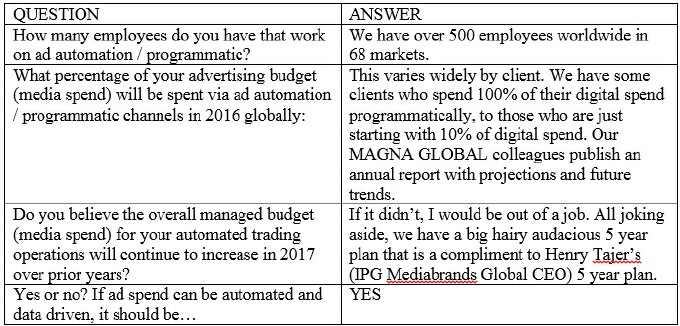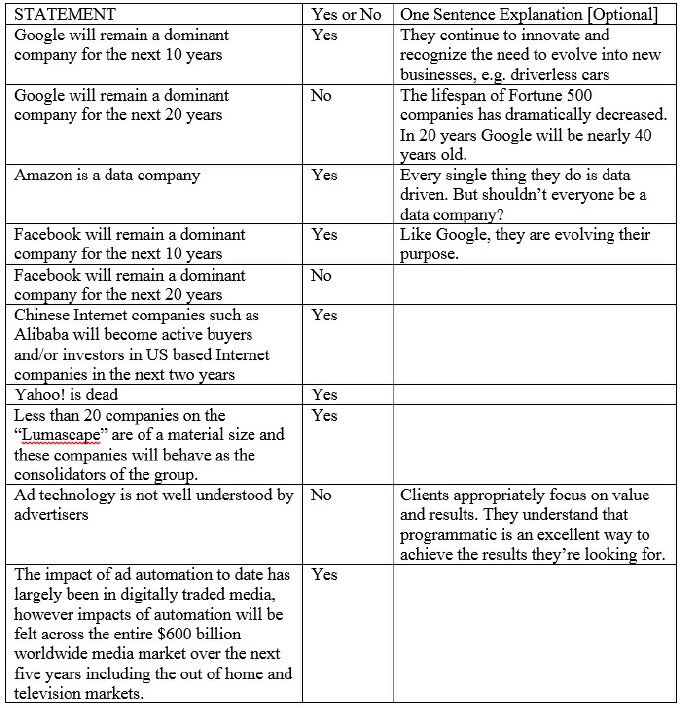Erica Schmidt of IPG’s Cadreon on Advertising Automation and Programmatic

Jay Sears, Senior Vice President Marketplace Development of Rubicon Project discusses advertising automation with Erica Schmidt, Executive Vice President, Managing Director of IPG’s Cadreon North America as part of a series of buyer conversations on the topic.
(Editor's Note: For more about advertising automation and programmatic, read Jay's interviews with Marco Bertozzi of Publicis' Performics, Paul Dalton of DigitasLBi, Mac Delaney of Merkle and Art Muldoon of Accordant Media.)
JAY SEARS: What do you read to keep up with politics, art and culture?
ERICA SCHMIDT: I voraciously read The New York Times, The Wall Street Journal, Recode, and for fun I still love the Daily Mail Showbiz section for brain candy, a vestige from my days of living in the U.K.
SEARS: What do you read to keep up with friends?
SCHMIDT: Social media platforms: Snapchat, Facebook and Instagram
SEARS: What do you read to keep up with the advertising technology industry?
SCHMIDT: AdExchanger, Digiday, MediaPost, AdAge and Recode
SEARS: What’s your favorite commercial of all time?
SCHMIDT: The Coca-Cola hilltop ad. I still hum it and love how it was profiled in the final episode of Mad Men. It was a kismet moment for me as the final episode aired just as we were pitching Coke in partnership with our sister agency Universal McCann.
SEARS: With regards to advertising automation, what are the three biggest trends you expect to impact companies in 2016 and 2017?
SCHMIDT:
- Further disruption of commercial models. When “RTB,” as it used to be called, and trading desks were first emerging, we anticipated a rapid and dramatic change in media agency staffing and models. It didn’t come as quickly as hoped for, but now that programmatic is mainstream clients are now asking about their wider commercial agreements and the impact of programmatic staffing on traditional media agency FTEs.
- Advanced or Programmatic TV. Having just come through the NewFronts and Upfronts the biggest trend was around audiences and data. My favorite moment was in the NBCUniversal Upfront when Liz Hurley made programmatic analogous to fly fishing.
- Cross Screen; not to be confused, as oft is the case, with cross device. In a world where audiences are ahead of the advertising expenditure in terms of time spent and dynamism, an evolution of planning and buying media is already gaining momentum and will continue to do so.
SEARS: With regards to advertising automation, what is the most overblown topic that you wish would just go away?
SCHMIDT: Header Bidding. Our industry is overly focused on talking to itself and unnecessarily complicating the dialogue for everyone involved.
SEARS: Describe your company or division and then tell us the three most common issues with which you help clients with respect to advertising automation and programmatic trading.
SCHMIDT:Cadreon is IPG Mediabrands’ ad tech unit, responsible for developing best-in-class programmatic technology solutions. In a widely disparate technology landscape, we leverage best-in-class technology to deliver the most comprehensive, highest-performing programmatic solutions on the market. We provide extensive expertise for some of the best and brightest brands across our IPG Mediabrands agency partner landscape. Headquartered in San Francisco, Cadreon operates in 68 markets worldwide.
Our three most common issues which we solve on behalf of our clients are:
- Superior delivery of programmatic strategy, campaign management and audience insights
- DMP consultancy
- Media and data partnerships
SEARS: Tell us about your company or division.
SCHMIDT:

SEARS: The majority of ad technology companies have struggled (relatively small, unprofitable or both). Of the poor performers, what are the commonalities between them that have contributed to this weakness?
SCHMIDT: Let’s face it, we work in a disruptive industry. The pace of change is rapid -- agility, nimbleness and innovation are necessary for all of us to survive and thrive. The poor performers quite frankly have some commonalities that many struggling businesses often do.
- Hubris. What often amazes me is that many of the platforms that were the dominant players in the ecosystem are not even on the radar today and it’s not because they were acquired or merged. They were massively successful, enjoyed the good ride and thought the wave would continue.
- Lack of customer centricity. Many of these platforms prevaricate when dealing with clients and audiences. It started with the “trading desks,” then the agencies, and ultimately client direct, creating noise and confusion and not making any friends along the way.
- Identity crises. This is tied to the previous two bullet points but the strugglers couldn’t decide who they wanted to be … and just tried to play in all aspects of the three letter acronym ecosystem instead of winning in one.
SEARS: A smaller handful of ad technology companies has achieved scale and performed better than the rest. What are the commonalities between them that have contributed to this relative strength?
SCHMIDT:It would be easiest if I said it was the opposite of the strugglers. But here’s what I truly think:
- Innovation. Companies with innovation at the core, and the ability to roll out to customers have won in this space.
- Humility. The strong performers have left their egos at the door. They treat everyone as a partner and are willing to come to the table and focus on being better together.
- Customer at the core. Embracing feedback, delivering a superior or at least competitive product and generating results.
SEARS: Do we live in a “tale of two cities” where Google and Facebook win almost everything, advertisers are dictated to and other media companies fight for the scraps?
SCHMIDT: Absolutely not, but those of us on this panel hold the keys to ensuring there is a marketplace that has diversity and balance and is representative of where audiences are consuming content. Does that include Google and Facebook? Absolutely, but they aren’t the only players.
SEARS: How can advertising automation help the strategy and planning functions (directly or indirectly) at an advertising agency?
SCHMIDT: Advertising automation in our IPG Mediabrands/IPG ecosystem is already helping the strategy and planning functions at the agencies. The core aspect of that benefit comes from data and insights. Data, reporting, audience insights and analysis are important components of our programmatic offering as they provide valuable information about target audiences and are powerful enough to impact planning, strategy and overall business decisions.
SEARS: Transparency -- on media costs, on data, on inventory -- continues to be a lightning rod issue. Should transparency be a negotiated benefit for the advertiser client, yes or no?
SCHMIDT:Yes. Transparency is now a hygiene factor. But the subject is not over: Commercial models and what the clients are really seeking continues to evolve.
SEARS: Please answer the following statements yes or no.
SCHMIDT:


SEARS: If you owned a yacht, what would you name it?
SCHMIDT: Electra
SEARS: A young family member has come to you seeking career advice. They must choose one of the following careers: ad agency executive, ad tech executive, company marketing executive or ice cream shop owner on the French Riviera. Which career path do you recommend and why?
SCHMIDT: I’m lucky as I have many young nieces and nephews and I will tell you what I tell them: Go where you are passionate and do what reflects your strengths and will make you happy. The success will follow. I majored in classical archaeology and ancient history and fully expected to be leading archeological digs in Greece and here I am an ad tech executive, and I love it.
SEARS: What is your favorite restaurant in the world?
SCHMIDT: River Café, London. Why? Italian food and a restaurant founded by two female chefs who have trained some of the top chefs in the U.K. (including Jamie Oliver and Theo Randall). I have some of my most cherished memories from time there.
SEARS: Thanks, Erica!
The opinions and points of view expressed in this commentary are exclusively the views of the author and do not necessarily represent the views of MediaVillage.com/MyersBizNet management or associated bloggers.


